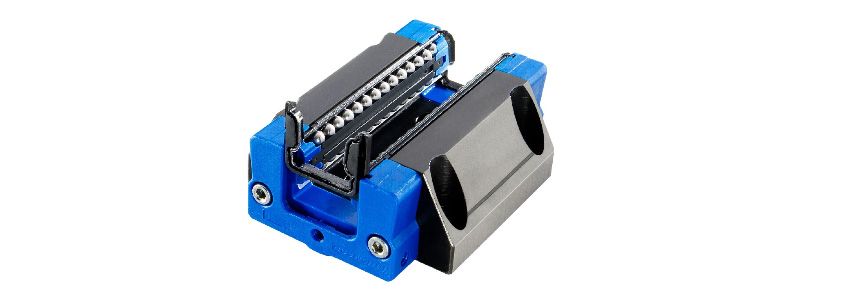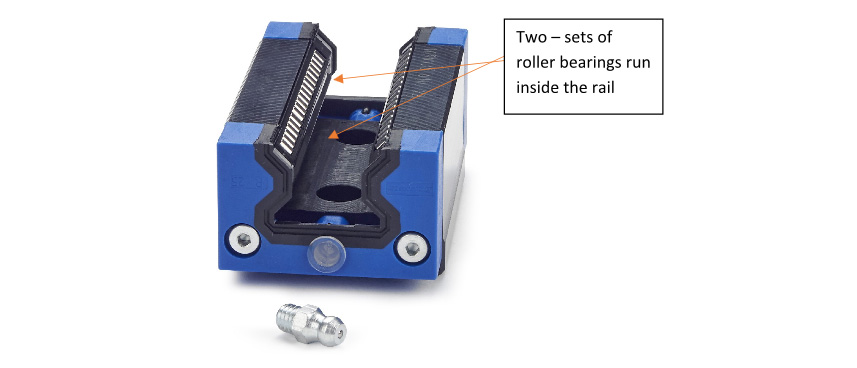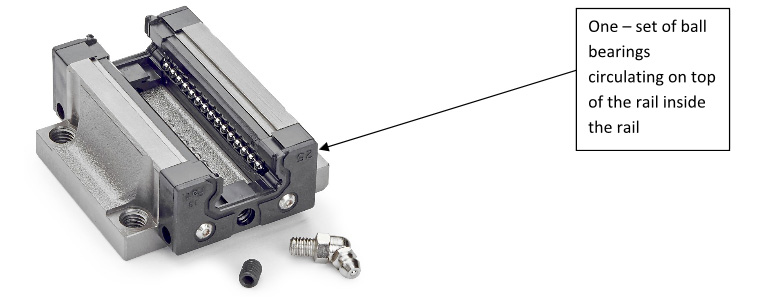感谢您访问我们的网站,您可能还对以下资源感兴趣:洛阳甘窖汽车用品有限公司
国产成人a∨激情视频厨房,国产毛片片精品天天看视频,天天狠天天透天干天天,连续高潮喷水无码,日韩日韩日韩日韩日韩熟女,欧美国产日韩在线三区,国产成人精品中文字幕,午夜福利国产一区二区三区
网站地图
国产福利深夜在线观看
精品无码人妻一区二区三区
四虎影视国产精品永久在线
下面一进一出好爽视频
在线精品自拍亚洲第一区
亚洲av片在线免费观看
视频免费完整版在线播放
亚洲www啪成人一区二区麻豆
精品一区二区三区国产在线观看
51午夜精品免费视频
久久久不卡国产精品一区二区
亚洲色国产欧美日韩
99精品在线视频观看
亚洲欧美日产综合在线
亚洲精品乱码久久久久久麻豆不卡
国产久草视频
国产对白熟女受不了了
国产成人免费
国语自产精品视频在线30
99这里只有精品6
久久国产精品夜色
√天堂资源在线中文8在线最新版
国产精品美女久久久久久2021
亚洲欧洲∨国产一区二区三区
99久久久无码国产精品aaa
热久久99这里有精品综合久久
国产一区二区三区免费观看在线
亚洲性夜夜摸人人天天
中文字幕佐山爱一区二区免费
2021亚洲爆乳无码专区
成人在线观看不卡
国自产精品手机在线观看视频
亚洲色无码专区在线观看精品
成人精品日韩专区在线观看
亚洲熟妇自偷自拍另类
在线无码va中文字幕无码
国产成人女人在线观看
亚洲AV电影不卡在线观看
亚洲成人动漫av在线
国产91吞精一区二区三区
中文字幕久久国产精品
国产精品黄大片在线播放
久久综合亚洲色hezyo社区
国产综合视频一区二区三区
天堂网www在线资源
成人综合人人爽一区二区
欧美成人一区二免费视频
久久国产精品夜色
成人无码潮喷在线观看
中文字幕无码人妻aaa片
国产亚洲欧洲AⅤ综合一区
99热国产这里只有精品9
日韩熟女乱综合一区二区
精品午夜福利1000在线观看
18禁美女裸身无遮挡免费网站
一区二区在线欧美日韩中文
自拍偷在线精品自拍偷免费
国产精品67人妻无码久久
欧美 亚洲 国产 另类
一区二区三区久久含羞草
天天综合网在线
精品视频一区二区三区不卡
久久免费午夜福利院
亚洲日韩欧美在线成人
女高中生自慰污免费网站
99在线小视频
国产精品一区二区在线观看
亚洲综合在线视频自拍
久久久久人妻精品一区二区三区
精品人妻二区中文字幕
欧美激情精品久久
久久这里只精品热免费99
国产在线观看免费人成视频
国产内射爽爽大片
亚洲熟妇无码爱V在线观看
国产精品午夜福利视频
久久久噜噜噜久久中文字幕色伊伊
99国产精品白浆在线观看免费
婷婷色中文字幕综合在线
女高中生强奷系列在线播放
苍井空一区二区三区在线观看
精品国产美女福到在线直播
日韩丰满少妇无吗视频激情内射
377P欧洲日本亚洲大胆
亚洲加勒比少妇无码av
国产在线无码精品无码
久久人妻公开中文字幕
中文字幕人妻精品在线
亚洲男人av天堂男人社区
久久精品精选
欧美人与动牲交a欧美精品
久久精品视频亚洲
永久免费av网站可以直接看的
国产精品美女久久久久久2021
久热综合在线亚洲精品
五月天久久久噜噜噜久久
真人无码作爱免费视频
亚洲乱码中文论理电影
国内久久婷婷五月综合色
中文字幕无码精品亚洲35
中文字幕人乱码中文
亚洲综合色成在线观看
三级网站
国产亚洲欧美精品一区
天堂网在线.www天堂在线资源
99国产精品自在自在久久
欧美交换配乱吟粗大视频
精人妻无码一区二区三区
国产精品播放一区二区三区
手机看片久久国产永久免费
日韩新无码精品毛片
av在线中文字幕不卡电影网
免费人成视频欧美
国产成人精品男人的天堂下载
蜜臀98精品国产免费观看
日韩a级毛片
亚洲性日韩精品一区二区三区
97人妻中文字幕总站
在线看午夜福利片国产
少妇激情一区二区三区视频
久久www成人免费网站
久久亚洲天堂
下面一进一出好爽视频
国产玖玖玖玖精品电影
亚洲AV无码专区电影在线观看
无码精品色午夜
亚洲熟妇自偷自拍另类
人人妻人人爽人人做夜欢视频
亚洲综合在线另类色区奇米
午夜福利国产片在线视频
国产精品2
精品国产网
国产一区二区三区激情视频
秋霞无码久久一区二区
麻豆成人av不卡一二三区
欧美xxxx做受欧美
在线中文字幕国产精品
日本狂喷奶水在线播放212
欧美国产亚洲精品成人a v
性做久久久久久免费观看
色悠悠国产精品免费在线
成人久久免费网站
婷婷伊人久久大香线蕉av
国产成人资源
亚洲精品日产精品乱码不卡
欧美性黑人极品hd
亚洲日韩欧洲无码AV夜夜摸
一区天堂中文最新版在线
久久综合亚洲色hezyo社区
超碰97人人模人人爽人人喊
最新亚洲国产手机在线
姝姝窝人体色WWW在线观看
午夜福利午夜福利1000
久视频免费精品6
国产免费午夜福利片在线
久久精品国产99精品国偷
亚洲三级视频在线观看
97精品伊人久久大香线蕉APP
中文人妻AV高清一区二区
最新中文字幕国产精品
日韩福利片午夜免费观着
国产成人精品日本亚洲专区6
狠狠色噜噜狠狠狠狠97俺也去
人妻 日韩 欧美 综合 制服
亚洲人成亚洲人成在线观看
欧美性黑人极品hd另类
亚洲国产精品线久久
九九热在线视频观看精品
国产av午夜精品福利
综合91在线精品
精精国产xxxx视频在线播放
蜜臀精品无码av在线播放
亚洲最大福利网站
影音先锋女人aa鲁色资源
日韩小视频在线观看
国产普通话对白刺激
久久精品国产亚洲av高
国内少妇偷人精品视频
91国产自拍一区二区三区
色爱综合激情五月激情
成人国产精品中文字幕
无码中文字幕DⅤD免费放
a级毛片在线免费
偷拍视频一区二区三区四区
视频二区国产精品职场同事
熟妇激情一区二区三区
日韩国精品一区二区a片
国内不卡的一区二区三区
国产老熟女乱子一区二区
麻豆国产97在线 | 中国
精品玖玖玖视频在线观看
久久国产亚洲AV无码专区
直接黄91麻豆网站
亚洲精品日产精品乱码不卡
无码囯产精品一区二区免费
国产做无码视频在线观看
日本a在线播放
a∨天堂亚洲区无码先锋影音
波多野结衣无码视频在线观看
久久亚洲精品11p
精品久久久久久无码不卡
国产主播在线观看
欧洲极品少妇
国产亚洲亚洲国产一二区
国产亚洲日韩一区二区三区
欧美肥婆姓交大片
国产在线一区二区香蕉 在线
亚洲午夜久久久久中文字幕
亚洲第一极品精品无码久久
精品九九热在线免费视频
国产AV无码专区亚洲AWWW
丁香五月激情缘综合区
国产精品久久久久成人
国产av国片精品一区二区
在线 国产 欧美 专区
精品 日韩 国产 欧美 视频
亚洲国产成人a精品不卡在线
亚洲妇女水蜜桃av网网站
亚洲aⅴ无码专区在线观看
亚洲色图欧美在线
欧美性生 活18~19
亚洲欧美综合一区二区三区
国产精品露脸视频
天天澡天天添天天摸97影院
国产三级韩国三级日产三级
国产精品毛片无码久久
亚洲A∨国产AV综合AV网站
国产噜噜噜
V一区无码内射国产
绝顶丰满少妇av无码
久久综合色之久久综合色
亚洲欧美日韩久久一区二区三区
国产欧美精品一区二区三区四区
人成午夜大片免费视频77777
人妻少妇88久久中文字幕
国产精品久久vr专区
亚洲国产韩国欧美在线
人妻丰满熟妇av无码区app
久久人妻AV无码一区二区
亚洲精品永久在线观看
亚洲a毛片
国产精品欧美福利久久
精品午夜福利在线视在亚洲
在线精品无码字幕无码av
人妻少妇不满足中文字幕
国产精品一区二区蜜臀av
隔壁老王国产在线精品
亚洲伊人久久大香线蕉综合图片
国产在线精品国偷产拍
91网站在线看
无码吃奶揉捏奶头高潮视频
亚洲欧洲精品a片久久99
国产精品99久久99久久久动漫
西西大胆午夜人体视频
日韩黄色av一区二区三区
亚洲欧洲日产国码久在线
精品欧美久久99久久久另类专区
激情六月丁香婷婷四房播
夜夜春久久天堂亚洲精品
欧美日本道免费二区三区
国产黄色大片网站
国内精品伊人久久久影院
久久综合精品国产丝袜长腿
在线观看无码一区二区台湾
久久精品国产最新地址
一本一道色欲综合网中文字幕
亚洲另类无码专区国内精品
亚洲国产精品综合久久网各
热久久国产
虎白女粉嫩尤物福利视频
亚洲欧洲日产国码无码AV一
午夜成人精品福利网站在线观看
欧美亚洲国产日韩电影在线
色噜噜狠狠狠综合曰曰曰
熟妇丰满多毛的大隂户
成人免费看片又大又黄
国产精品aⅴ视频在线播放
国产精品福利一区二区久久
精品无码一区二区三区av
国产国模一区二区三区四区
日本成人午夜一区二区三区
日韩AV无遮挡污污在线播放
中文字幕亚洲综合久久
久久天天躁狠狠躁夜夜躁
蜜桃av抽搐高潮一区二区
四虎永久在线精品无码视频
玩肥熟老妇bbw视频
色多网站在线观看
日本国产制服丝袜一区
少妇的肉体aa片免费
日本国产制服丝袜一区
国产一区二区在线观看的
国产成+人+综合+亚洲专区
亚洲国产综合精品 在线 一区
h无码精品3d动漫在线观看
亚洲裸男自慰gv网站
亚洲精品97久久中文字幕无码
无套内内射视频网站
97久久久亚洲综合久久
和黑人中出一区二区三区
色欲国产一区二区日韩欧美
欧美日韩不卡合集视频
最新国产精品无码
人妻久久久一区二区三区
黑人巨大亚洲一区二区久
国内精品伊人久久久久av影院
中国精学生妹品射精久久
国产精品毛片va一区二区三区
久热综合在线亚洲精品
日韩人妻无码精品久久久不卡
极品粉嫩嫩模大尺度无码视频
亚洲一区二区三区日本久久九
中文岛国精品亚洲一区
日韩新无码精品毛片
网友偷拍视频一区二区三区
亚洲自偷自拍熟女另类
秋霞无码久久一区二区
青青热在线精品视频免费观看
国产一区二区三区免费观看在线
最近中文字幕最新在线视频
亚洲熟妇av一区二区三区浪潮
虎白女粉嫩尤物福利视频
精品无码一区二区三区在线
在线视频 亚洲精品
国产在线精品成人一区二区
久视频免费精品6
最新精品久久精品
男男欧美一区二区
日日躁狠狠躁狠狠爱
国产欧美另类久久久精品丝瓜
亚洲成αv人片在线观看
久久精品国产亚洲一区二区
精品国产中文字幕在线看
久久精品波多野结衣
九色91精品国产网站
91精品亚洲一区二区三区
国产精品2
影音先锋无码a∨男人资源站
亚洲天堂网2014
精品偷拍一区二区三区在
国产日产免费高清欧美一区
国产无遮挡a片无码免费软件
国产中文字幕精品喷潮
曰韩a∨无码一区二区三区
亚洲开心婷婷中文字幕
白白发布视频一区二区视频
免费无码又爽又黄又刺激网站
精品国产一区二区三区卡
超碰人人超碰人人
国产av亚洲精品久久久久李知恩
国产精品无码av一区二区三区
九九香蕉视频
久久香蕉国产线看观看精品蕉
最新精品久久精品
少妇人妻偷人精品无码视频
色偷偷av亚洲男人的天堂
免费一级毛片不卡在线播放
亚洲国产福利成人一区
亚洲中文欧美日韩在线人
无码草草草在线观看
国产成人av无码精品天堂
樱花草视频www日本韩国
五月婷网站
一日本道伊人久久综合影
2020国产欧洲精品网站
国产精品嫩草影院入口一二三
亚洲天堂在线免费
国产一区二区在线影院
亚洲欧美中文日韩V在线观看
av天堂中av世界中文在线播放
久久综合亚洲色hezyo社区
男女猛烈xx00免费视频试看
强行糟蹋人妻hd中文
无码福利写真片在线播放
国产一区二区波多野结衣
国产太嫩了在线观看
久久精品国产清自在天天线
无码乱码av天堂一区二区
大尺度av无码污污福利网站
精品一区二区久久久久久久网站
高潮喷吹一区二区在线观看
情欲少妇人妻100篇
亚洲熟女乱综合一区二区在线
欧美视频在线观看第一页
精品人妻无码区二区三区
亚洲国产精品电影人久久
国产亚洲婷婷香蕉久久精品
成人免费视频视频在线观看 免费
国产极品久久久久久久久
精品无码久久久久久久四虎
精品乱码一区二区三四五区
免费一级毛片不卡在线播放
成人免费看片又大又黄
久久美女夜夜骚骚免费视频
国产激情av一区二区三区
日本牲交大片无遮挡
久久精品国产亚洲AV麻
久久久www成人免费毛片
国产清纯在线一区二区
五月婷婷丁香综合
久久99精品国产麻豆婷婷洗澡
色噜噜亚洲男人的天堂
国产国产久热这里只有精品
日韩欧美中文字幕在线韩免费
国产又爽又黄又舒服又刺激视频
在线视频精品一区
99久久婷婷国产综合精品电影
宅男午夜成年影视在线观看
人妻中文字幕一区二区视频
精品无码人妻一区二区三区
中文字幕有码日韩精品
国产精品久久露脸蜜臀
综合亚洲色图
连续高潮喷水无码
午夜福利理论片高清在线观看
亚洲成网777777国产精品
99re热这里只有精品最新
99亚洲男女激情在线观看
国产免费av片在线观看播放
亚洲最大综合久久网成人
日韩在线成年视频人网站观看
中文字幕乱码亚洲无线精品一区
无码精品国产D在线观看
欧美亚洲国产一区
亚洲av无码一区二区三区18
色噜噜亚洲男人的天堂
日本道高清一区二区三区
亚洲欧美闷骚少妇影院
50岁退休熟女露脸高潮
国产亚洲欧洲AⅤ综合一区
日韩无人区码卡1卡2卡
亚洲熟妇国产熟妇肥婆
久久久久人妻一区视色
久久特级毛片
国产AV激情久久无码天堂
在线精品国产中文字幕
亚洲成αv人片在线观看
久久www成人免费网站
青青草原精品资源站久久
久久婷婷五月综合色99啪
中文字幕亚洲精品人妻
色伦专区97中文字幕
亚洲熟女乱综合一区二区在线
出租屋勾搭老熟妇啪啪
亚洲国产精品成人午夜在线观看
日本a在线播放
一级毛片免费观看不卡视频
成人无码www免费视频
好吊妞视频这里有精品
欧美 日韩 国产 另类 图片区
2018av无码视频在线播放
97日日碰曰曰摸日日澡
а√天堂8资源中文在线
国产成人精品免费久久久久
无码一区二区三区av在线播放
国产欧美一区二区三区免费视频
久久久久99精品国产片
亚洲欧美不卡
国产最新av在线播放不卡
国产寡妇树林野战在线播放
国产伦精品一区二区三区妓女
久热久视频免费在线观看
国产精品无码久久一线
久久精品人人做人人爽电影蜜月
天天摸夜夜操
亚洲日韩看片成人无码
精品午夜福利1000在线观看
色偷偷av亚洲男人的天堂
国产精品综合色区在线观看
成年丰满熟妇午夜免费视频
超清无码一区二区三区
精品一区二区不卡无码av
国产成人av片在线观看
国产九九99久久99大香伊
亚洲一区二区三区蜜桃臀
真人无码作爱免费视频
av天堂午夜精品一区二区三区
亚洲人成色7777在线观看
亚洲国产韩国欧美在线
国产不卡精品视频男人的天堂
中文字幕人妻偷伦在线视频
亚洲区欧美区
亚洲精品av无码喷奶水网站
国产成人 综合 亚洲欧美
国产成人精品亚洲高清在线
精品无码国产一区二区三区51安
99这里只有精品
国产在线超清日本一本
亚洲国产精品一区二区第一页
中文字幕波多野不卡一区
国产精品久久久久9999无码
亚洲国产成人综合一区二区三区
西西人体大胆444WWW
午夜久久一区二区狠狠干
日本手机在线视频
精品乱人伦一区二区三区
日本黄页网站免费观看
日韩 亚洲 欧美 国产 精品
久久在精品线影院精品国产
亚洲永久网址在线观看
国产成人精品A视频免费福利
日本黄网站三级三级三级
777米奇影院狠狠色
精品国产这么小也不放过
国产日韩一区二区四季
91在线精品免费免费播放
国产99蜜臀视频精品免费视频
国产成人精品手机在线观看
中文字幕人妻伦伦
国产精品久久久久久人妻无
夜夜躁狠狠躁日日躁2022
久久精品国产亚洲AV麻
免费观看性欧美大片无片
色爱综合激情五月激情
午夜日韩久久影院
久久久久亚洲AV成人网毛片
无码国产精品一区二区vr老人
久久国内精品自在自线观看
亚洲精品国产无套在线观
国产区在线观看视频
国产精品一区二区av蜜芽
久久国产热精品波多野结衣av
在线观看91香蕉国产免费
人妻教师痴汉电车波多野结衣
国产成人精品日本亚洲专区
亚洲精品理论电影在线观看
99热精国产这里只有精品
亚洲一区二区三区写真
国产精品中文av专线
精品欧美日韩国产日漫一区不卡
无码内射中文字幕岛国片
久久露脸国产精品
人妻中文字幕一区二区视频
无码福利写真片视频在线播放
免费一极毛片
精品乱码一区二区三四五区
成人免费无码大片A毛片抽搐色欲
国产成人午夜福利在线观看
国产亚洲视频免费播放
男人又大又硬又粗视频
日日干夜夜操
人人妻人人澡人人爽
久久天天躁夜夜躁狠狠ds005
亚洲欧美日产综合在线
亚洲中文波霸中文字幕
欧美三级不卡在线播放
日本乱偷人妻中文字幕
日韩精品一卡二卡在线观看
国产无套乱子伦精彩是白视频
国产不卡精品视频男人的天堂
亚洲另类激情专区小说
亚洲国产成人综合一区二区三区
天天躁日日躁狠狠躁欧美老妇
欧美肥婆姓交大片
人妻少妇偷人作爱av
日韩高清不卡免费一区二区
亚洲av片在线免费观看
国产成人精品日本亚洲专区
2018av无码视频在线播放
免费无码av片在线观看中文
久久人人爽人人人人片
国产精品ⅴ无码大片在线看
精品国产美女福到在线直播
丝袜老师办公室里做好紧好爽
久久青草免费91线频观看不卡
在线a亚洲老鸭窝天堂
国产成年无码AⅤ片在线
四虎影视国产精品永久在线
亚洲欧美日韩另类精品一区
激情六月丁香婷婷四房播
亚洲国产成人久久综合一区77
日韩av日韩av在线
国产成人精品97
国产精品午夜福利片国产
强开少妇嫩苞又嫩又紧九色
国产成人无码免费视频79
在线播放无码字幕亚洲
日韩免费毛片视频
欧美日韩午夜群交多人轮换
中文字幕在线观看
亚洲精品国产精品国产自2022
91亚洲国产成人久久精品
91国产自拍一区二区三区
欧美国产日韩久久mv
永久国产盗摄一区二区色欲
亚洲成av人最新无码不卡短片
99久久精品无码一区二区三区
18禁真人抽搐一进一出动态图
亚洲线精品一区二区三区八戒
漂亮人妻中文字幕丝袜
国产女人精品视频国产灰线
国产成人精品亚洲日本语言
国产精品播放一区二区三区
国产老熟女乱子一区二区
国产精品多p对白交换绿帽
国产乱码精品一区二区三区四川人
色综合天天操
国产人妻无码一区二区三区18
久久综合色一综合色88
蜜桃视频一区二区三区四
老熟女熟妇一区二区三区
亚洲偷精品国产五月丁香麻豆
亚洲精品国产美女久久久99
久久免费视频播放
亚洲精品国产美女久久久99
99色亚洲国产精品11p
乱人伦中文字幕在线
国产精品成人一区二区三
极品尤物一区二区三区
亚洲中文欧美日韩在线人
欧美成人综合视频
午夜精品久久久久久久无码
51午夜精品免费视频
欧美va天堂va视频va在线
天堂中文最新版在线中文
亚洲av成人无码精品电影在线
中文字幕波多野不卡一区
人妻精品国产一区二区
国产久9视频这里只有精品
日韩在线 | 中文
亚洲熟妇无码av在线播放
亚洲精品无码久久久久牙蜜区
超碰成人精品一区二区三
久久无码人妻丰满熟妇区毛片
狠狠色综合久久狠狠色综合
亚洲色图欧美一区
免费无码黄网站在线观看
九九热在线免费视频精品
国产精品久久久久久影视
久久这里只有精品2
国产欧美va欧美va香蕉在
亚洲欧洲自拍拍偷午夜色无码
人妻av久久一区波多野结衣
欧美亚洲国产精品久久蜜芽直播
日韩 亚洲 欧美 国产 精品
天堂资源中文最新版在线一区
少妇粗大进出白浆嘿嘿视频
无码av中文一区二区三区桃花岛
国产91丝袜在线观看
久久中文字幕一区二区
国产成人午夜一区二区三区
国产免费午夜高清
欧美a在线播放
国产成人精品男人的天堂下载
国产精品三级片一区
久久久久久久久久久综合日本
日韩精品高清自在线
国产高清在线精品一区不卡
少妇人妻偷人偷人精品
久久无码免费束人妻
国产精品色哟哟成人av
国产乱人激情H在线观看
亚洲精品无码久久久久牙蜜区
日本在线a一区视频
日韩精品一区二区三区中文无码
欧美极度丰满熟妇hd
亚洲综合久久一本伊一区
久久精品国产最新地址
91精品国产自产在线蜜臀
av网站免费线看精品
国产精品久久久久久久久ktv
国产女人精品视频国产灰线
2020国产精品久久精品
国产精品一区二区在线观看
欧美成人怡红院一区二区
18禁在线一区二区三区
国产亚洲视频免费播放
亚洲美女厕所偷拍美女尿尿
久久综合偷拍视频五月天
人妻少妇456在线视频
国产午夜成人无码免费看
18禁视频一区二区三区
91久草视频
日韩一区二区三区不卡片
久久天天躁狠狠躁夜夜2019
国产成人高清精品亚洲
国产亚洲一区二区手机在线观看
三级三级三级A级全黄
中文 在线 日韩 亚洲 欧美
久久亚洲精品ab无码播放
日本体内she精高潮
一级呦女专区毛片
色偷偷av亚洲男人的天堂
国产精品ⅴ无码大片在线看
成人精品视频99在线观看免费
久久久99无码一区
国产亚洲精品久久久999
综合在线 亚洲 成人 欧美
四虎影视国产精品永久在线
亚洲成人av一区二区
国内不卡的一区二区三区
国产av一区二区不卡
国产一精品一av一免费
疯狂做受xxxx高潮欧美日本
在线观看国产亚洲视频免费
好了av第四综合无码久久
亚洲成人精品一区二区中
亚洲国产精品人人做人人爱
国产欧美日韩综合在线第一
国产精品午夜福利片国产
少妇激情a∨一区二区三区
五月天激情婷婷婷久久
国产精品成人观看视频国产奇米
亚洲精品成人区在线观看
婷婷伊人久久大香线蕉av
国产后入又长又硬
色婷婷亚洲精品综合影院
国产无遮挡又爽又黄的视频
香蕉av福利精品导航
日本体内she精高潮
女高中生强奷系列在线播放
精品一区二区三区在线播放视频
亚洲自偷自偷偷色无码中文
久久婷婷六月综合色液啪
亚洲韩国精品无码一区二区三区
亚洲熟女乱一区二区三区
日韩一区二区三区不卡片
国内少妇偷人精品视频
免费无码在线播放av
三级中文字幕永久在线视频
成年美女黄的视频网站
亚洲国产精品久久久天堂麻豆宅男
亚洲第一色在线
欧美激情网址
国产精品自在拍首页视频8
精品国产av色一区二区深夜久久
99热这里只有精品国产99
国产精品成人久久电影
国产玖玖玖玖精品电影
国产精品高清视亚洲乱码有限公司
日本一区不卡高清更新二区
精品一区二区三区无码免费直播
亚洲综合另类小说色区大陆
色爱区综合激情五月激情
av片在线观看永久免费
亚洲美女国产精品久久久久久久久
国产美女视频黄a视频全免费网站
超碰成人精品一区二区三
青草av久久一区二区三区
九色91精品国产网站
久久亚洲国产成人影院
夜夜躁很很躁日日躁麻豆
国产91精品一区二区亚洲
人妻体体内射精一区二区
午夜福利视频网站
日本乱偷人妻中文字幕
国产成人精品日本亚洲直接
亚洲一区sm无码
综合激情五月丁香久久
成人欧美一区二区三区在线观看
国产69精品久久久久乱码
国产粉嫩系列一区二区三
午夜无码国产理论在线
天堂av最新版中文在线
欧美zozo另类特级
精品无码一区二区三区
亚洲精品天堂一区二区
日韩在线精品成人av
成人区亚洲区无码区在线点播
久久精品国产亚洲综合av
无码一区二区三区av免费蜜桃
欧洲av毛片
中日韩中文字幕一区二区
国产成人一区免费观看
亚洲综合伊人久久大杳蕉
日韩av片无码一区二区不卡
av永久天堂一区二区三区
婷婷色爱区综合五月激情
国产日产欧产精品精品软件
青青草原亚洲
欧美a在线
春色校园亚洲愉拍自拍
中文字幕婷婷日韩欧美亚洲
欧美激情视频在线观看一区
精品亚洲国产探花在线播放
无码一区二区三区av免费蜜桃
青草精品国产福利在线视频
精品无码久久久久久久四虎
国产成人亚洲综合网站
亚洲精品国产欧美一二区
色情无码一区二区三区
久久无码免费束人妻
国产一区二区波多野结衣
国产成人精品97
国产精品黄大片在线播放
色噜噜狠狠狠狠色综合久一
99久久精品国产一区二区蜜芽
亚洲熟妇乱色一区二区三区
亚洲天堂网色图伦理经典
无码少妇高潮浪潮AV久久
三级中文字幕永久在线视频
中文字幕人乱码中文
青草精品国产福利在线视频
欧美熟妇性xxxx交潮喷
国产成人女人在线观看
国产在线无码制服丝袜无码
日韩亚洲欧美精品综合
色婷婷综合久久久中文字幕
干中文字幕
激情综合亚洲色婷婷五月
2021自拍偷在线精品自拍偷
日韩av在线直播
亚洲中文字幕无码爆乳
亚洲国产成人综合精品
五月婷婷丁香综合
国精产品自偷自偷综合下载
免费高清a毛片
免费一区二区无码东京热
亚洲一区二区精品另类
国产精品一区二区在线观看
无码 制服 丝袜 国产 另类
久久久受www免费人成
国产永久免费视频m3u8
国产999久久高清免费观看
九九热在线视频
99久久久无码国产精品古装
无码任你躁久久久久久
99久re热视频这里只有精品6
四虎永久在线精品视频免费观看
亚洲无线观看
亚洲爆乳大丰满无码专区
成人区精品一区二区不卡
亚洲a∨国产av综合av下载
国产一区二区人大臿蕉香蕉
国产亚洲一区二区三区四区
亚洲精品久久久口爆吞精
国产成人喷潮在线观看
玩中年熟妇让你爽视频
影音先锋女人aa鲁色资源
另类 亚洲 图片 激情 欧美
国产在线视频福利资源站
亚洲高清码在线精品av
精品人妻av中文字幕乱
丝袜老师办公室里做好紧好爽
国产又黄又爽无遮挡不要vip
色午夜日本高清视频www
图片区小说区亚洲欧美自拍
国产成人啪视频一区二区三区
国产免费一区二区三区不卡
亚洲成av人片无码不卡
五月丁香六月激情综合在线视频
免费一区二区三区视频狠狠
中文字幕人妻av一区二区
人妻熟女αⅴ一区二区三区
欧美性猛交xxx嘿人猛交
香蕉久久夜色精品国产尤物
久久久久国产一级毛片高清板
国产精品久久久久影视不卡
亚洲人成影院在线观看
国内精品一区二区不卡
在线免费播放亚洲自拍网
久久碰国产一区二区三区
国产精品色一区二区三区
日本高清视频色欧WWW
亚洲成人精品一区二区中
欧美第二区
国内精品伊人久久久久7777
亚洲第一极品精品无码久久
无码av孕妇专区
亚洲欧美日韩精品中文乱码
欧美另类高清zo欧美
国产免费丝袜调教视频免费的
亚洲另类激情专区小说
在线看av一区二区三区
久久精品无码av
疯狂做受xxxx高潮不断
色综合人人超人人超级国碰
国产亚洲欧洲aⅴ综合一区
亚洲在av极品无码
成人免费一区二区三区
黑人牲交视频全部
国产黄三级高清在线观看播放
日韩吃奶摸下aa片免费观看
国产亚洲精品久久久久秋霞不卡
色欲国产一区二区日韩欧美
国产成人精品人人2020视频
日韩无码AV一区二区
日韩a级毛片
国产精品电影久久久久电影网
搡老妇女老熟女一区二区
久久国产福利国产秒拍
欧美日韩精品综合在线一区
婷婷九月丁香
色情无码一区二区三区
亚洲精品久久无码av片软件
国产在线观看高清不卡
男人天堂亚洲天堂女人天堂
九九色在线视频
丁香婷婷色
99久久久无码国产精品免费砚床
制服丝袜美腿一区二区
97色伦午夜国产亚洲精品
亚洲中文字幕手机在线第一页
色婷婷综合久久久中文字幕
亚洲色最新高清AV网站
国产一区国产二区在线精品
天天摸夜夜操
精品一区二区三区国产在线观看
99成人在线观看
日日噜噜夜夜狠狠视频无码
亚洲各类熟女们中文字幕
超碰成人人人做人人爽
激情五月开心综合亚洲
国产 | 久你欧洲野花视频欧洲1
99久久精品费精品国产一区二
激情综合丁香五月
亚洲成A人V欧美综合
精品无码一区二区三区AV
国产亚洲精品久久久久久打不开
在线观看无码av网站永久免费
久久久受www免费人成
国产人成激情视频在线观看
伊人精品无码av一区二区三区
天天躁日日躁狠狠躁av
人妻人人做人做人人爱
国产一区内射最近更新
国产熟睡乱子伦午夜视频
久久精品国产精品亚洲色婷婷
日韩成人免费无码不卡视频
日韩人妻精品中文字幕专区
人妻无码av一区二区三区精品
成人片在线看无码不卡
免费一区啪啪视频
无码福利写真片在线播放
8x国产精品视频
91精品国产高清久久久久久g
久久66热人妻偷产精品
99久久综合九九亚洲
亚洲国产精品毛片在线看
超碰日韩AV在线
男男欧美一区二区
国产永久免费视频m3u8
精品 日韩 国产 欧美 视频
少妇激情av一区二区三区
亚洲国产日韩视频观看
免费国产在线一区二区
国产丝袜啪啪
免费毛片网站在线观看
天堂av网一区二区三区
久久国产热精品波多野结衣av
一区二区三区啪偷拍
青草视频在线播放
亚洲成a人v欧美综合天堂麻豆
亚洲国产欧美人成
特级欧美成人性a片
国产玖玖玖玖精品电影
国产精品一区二区亚瑟不卡
久热这里有精品视频在线
国产亚洲精品自在久久77
992tv国产人成在线观看
亚洲国产日韩成人a在线欧美
久章草这里只有精品
免费一区二区三区视频狠狠
国产乱子伦精品免费女
少妇激情a∨一区二区三区
国产无遮挡性视频免费看
国产丰满乱子伦无码专区
久久精品99久久香蕉国产
y1111111少妇无码
最新国产精品无码
一二三四在线视频观看社区
亚洲国产成人资源在线
国产太嫩了在线观看
亚洲国产精品久久青草无码
一本一道色欲综合网中文字幕
久热综合在线亚洲精品
亚洲欧洲日韩国内精品
亚洲最大在线观看
在线看国产精品三级在线
乱亲女h秽乱长久久久
精品国产肉丝袜久久
国产普通话对白刺激
91在线激情在线观看
人妻丰满av无码中文字幕
国产精品三级av及在线观看
国产精品18久久久久久vr
国产成人无码av一区二区在线观看
国产精品久久久久久人妻无
嫩草伊人久久精品少妇av
精品国产av色一区二区深夜久久
不卡一区二区三区视频播放
国产精品综合色区在线观看
国自产精品手机在线观看视频
亚洲国产大片永久免费看
久久国产精99精产国高潮
成人无码潮喷在线观看
国产精品成人免费视频网站京东
亚洲日韩欧洲无码AV夜夜摸
开心五月色婷婷综合开心网
波多野衣结在线精品二区
高清精品视频一区二区三区
日韩无码电影
av区无码字幕中文色
99精品国产再热久久无毒不卡
久久久噜噜噜久久中文字幕色伊伊
精品视频不卡免费观看
成人无码一区二区三区网站
亚洲日本va中文字幕婷婷
亚洲aⅴ无码专区在线观看q
日本一区二区三区免费播放视频站
亚洲欧美日韩精品色xxx






